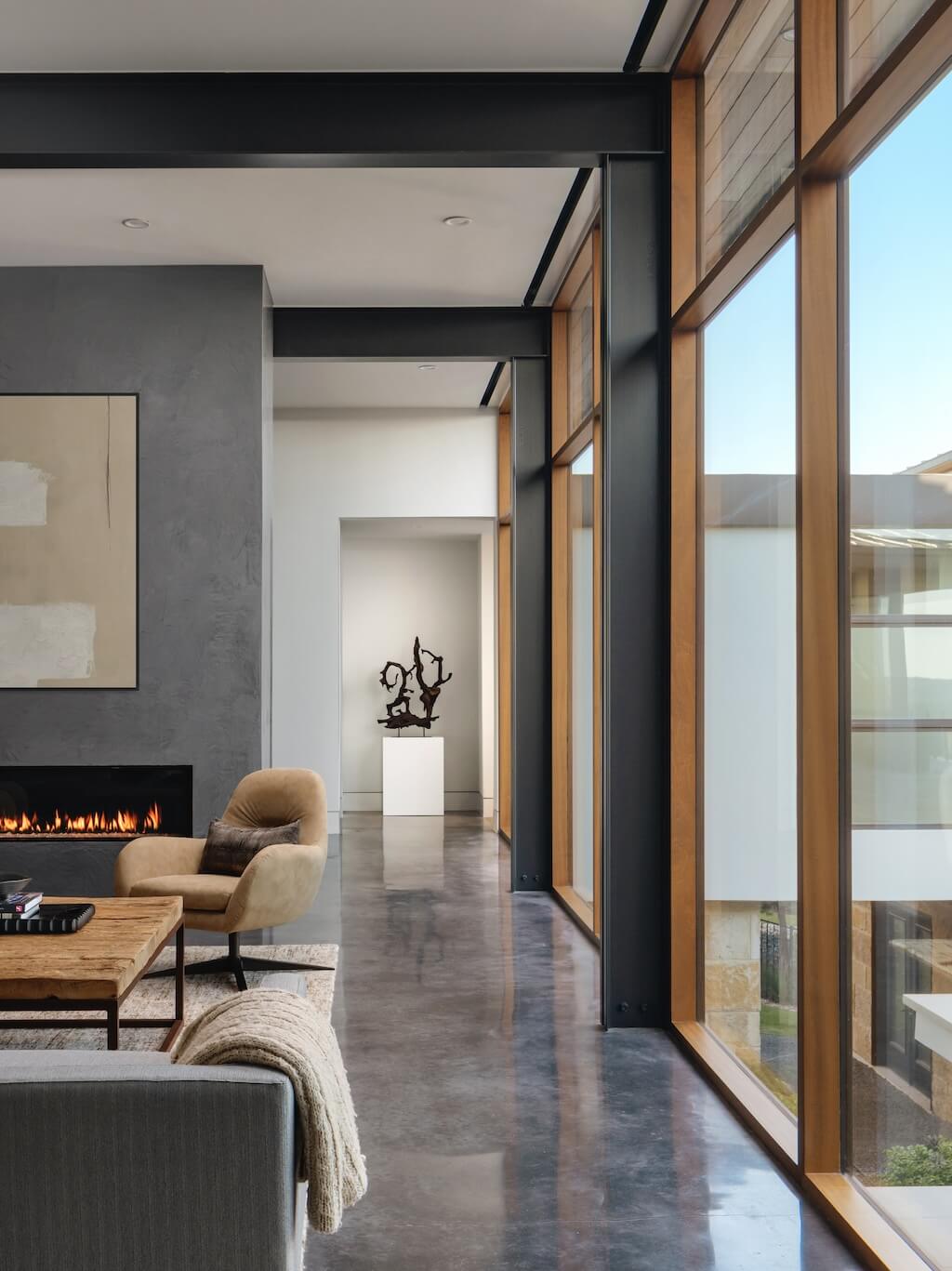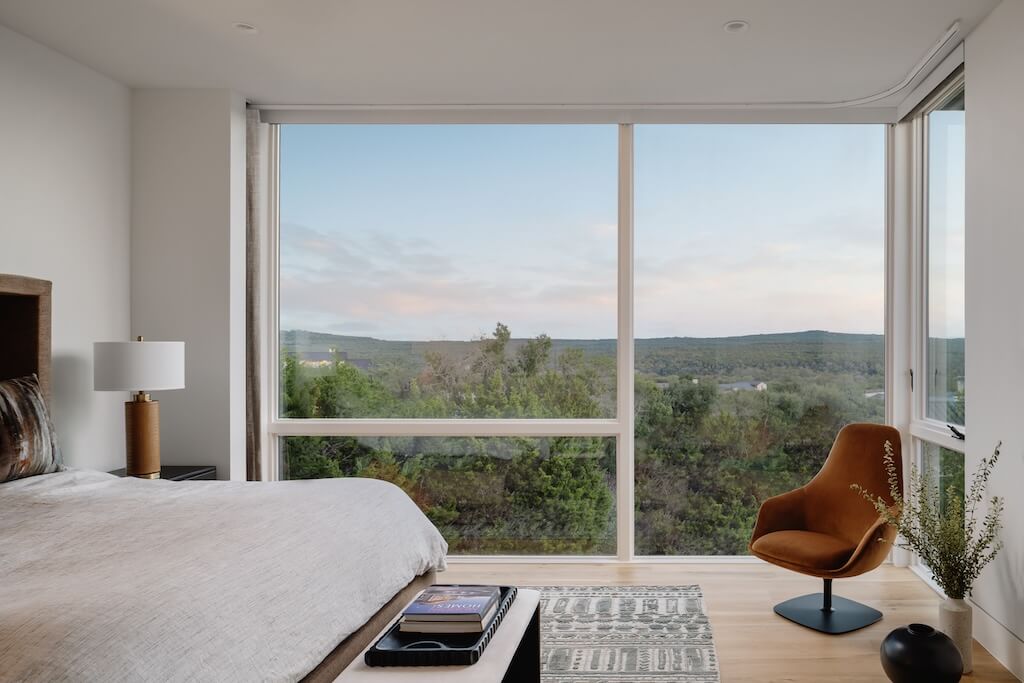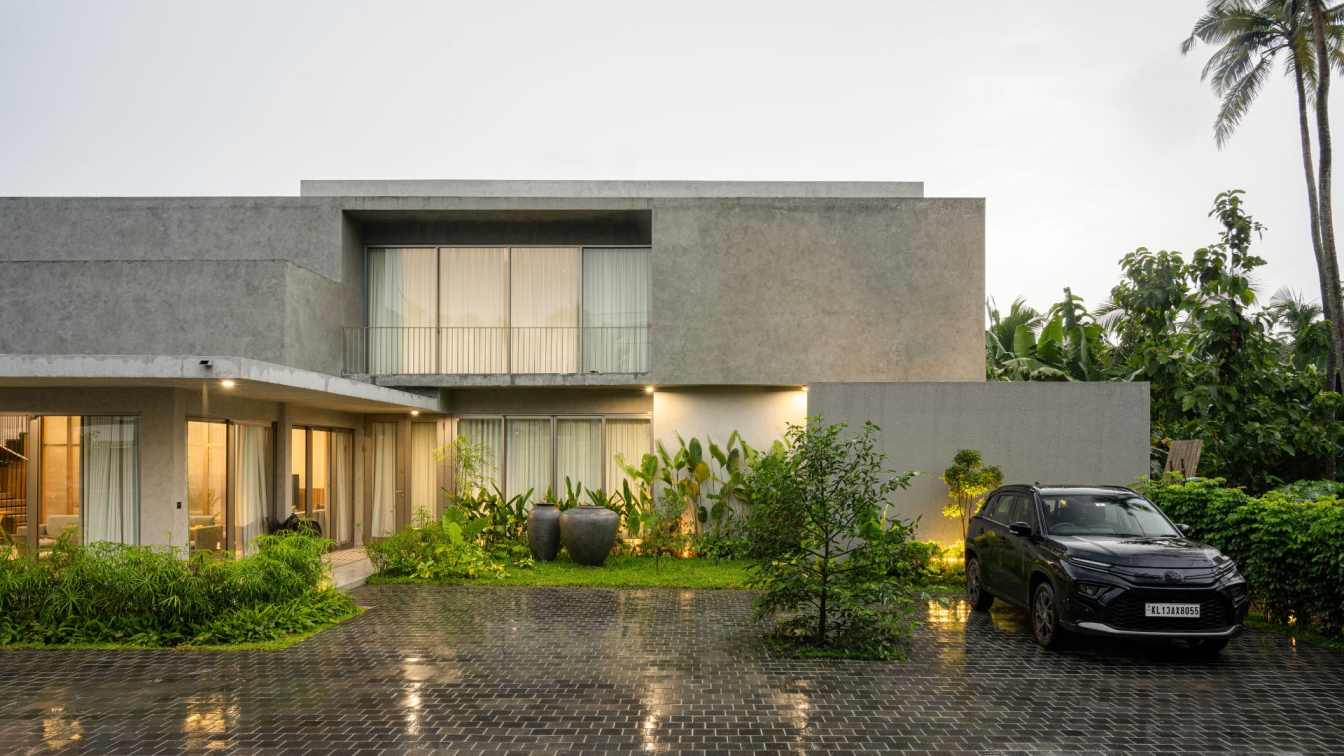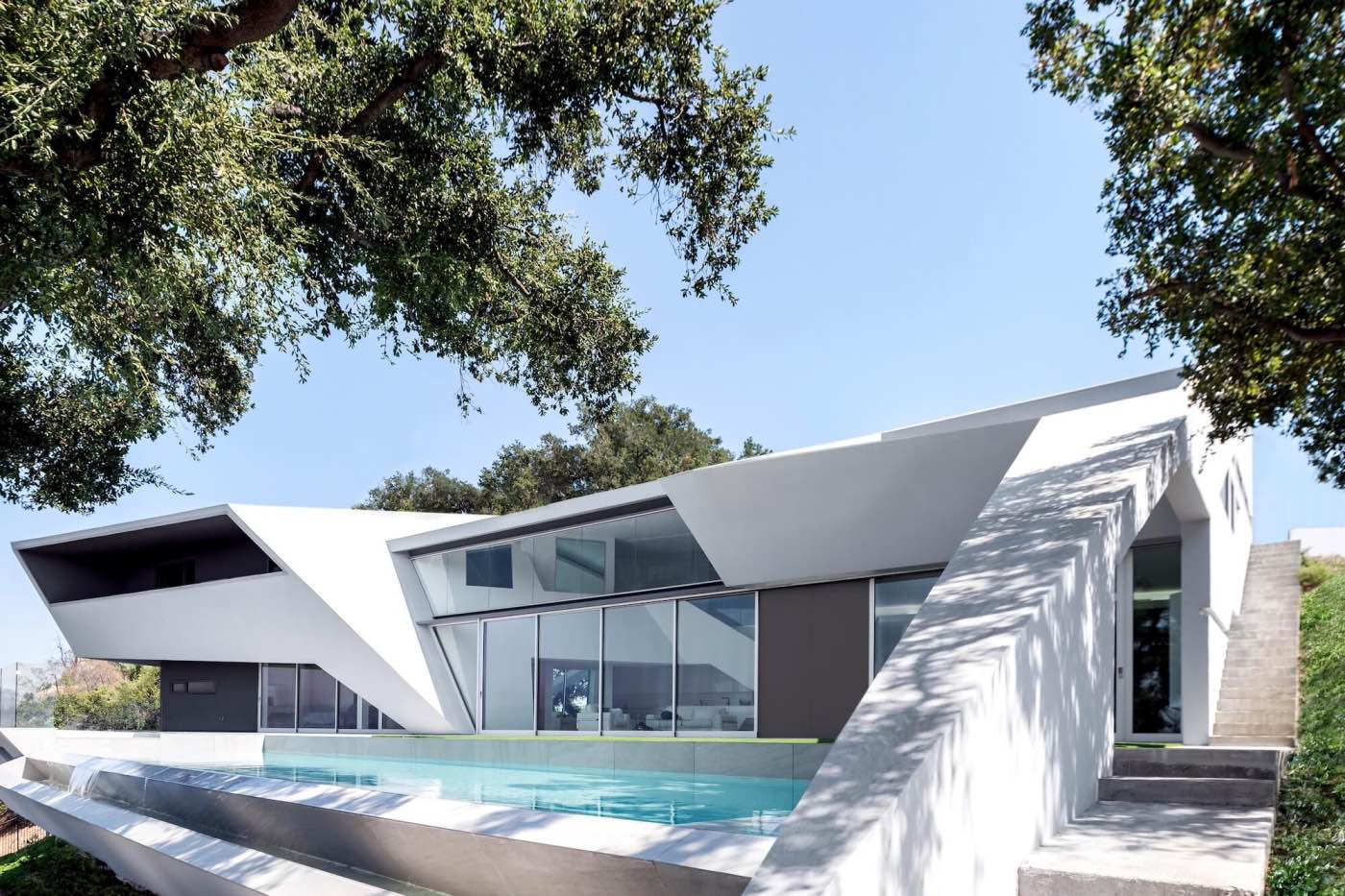Situated on .75- acre with a generous amount of topography, the home’s street side is the highest point with an almost 30 feet drop off to the rear. Because there is so much fall across the lot, LaRue opted to place the homeinto a natural shelf on the site, about six feet down from the street elevation. From the rear the house nestles itself into the land. The striking vistas andnative landscape play a pivotal role in shaping the exterior, with careful consideration given the house was meticulously positioned to capitalize on the sweeping vistas of the Hill Country. Placed central to the home, the main living area boasts floor-to-ceiling glass windows that frame the outdoors, drawing the gaze outward to the captivating landscape, including the Barton Creek Preserve.
“The house was meticulously positioned to capitalize on the sweeping vistas of Austin’s Hill Country and Barton Creek Preserve. Placed central to thehome, the main living area boasts floor-to-ceiling glass windows that frame the outdoors, drawing the gaze outward to the captivating landscape,” says Jame LaRue, LaRue Architects.
The architects purposefully incorporated architectural features and materials that resonate with the surroundings and reflect the home's setting by utilizing regional exterior materials that anchor the home within its site, and blend harmoniously with the natural landscape. Floor-to-ceiling glass dissolves theboundary between interior and exterior, inviting panoramic views of thesurroundings into the living spaces. The elongated, low roofline gently nestles the house into the land, ensuring it integrates with the environment without overpowering it, while maintaining a visual connection with the landscape.
The home is predominantly a one-story residence. However, because of thenatural fall of the site, the architects captured space below the main floor for additional living areas – housing two bedrooms with ensuite baths, dry sauna and exercise room with glass doors opening to a sweeping terrace. In themorning, the sun rises to the rear side of the home and is a natural alarm clock with the bedrooms on this side. In the evening, the sun sets to the front of the home, so the architects predominantly closed this side off to deflect theglaring Texas sun.

Polished concrete floors provide a solid foundation for the sunlit rooms. Custom walnut millwork subtly defines spaces while maintaining a sense of cohesion. The interior design team chose warm whites, creams, and hints of rust to balance the cool gray hues that span from the subtlest shade of stone to the deepest, darkest charcoal with flecks of copper, brass and chrome thrown in for a little luxe.
In the kitchen, KCID took cues from the walnut cabinets, custom blackened-steel vent hood and Ann Sacks’ Savoy tile backsplash. Because the family loves to cook, the room was outfitted with a Wolf range and Sub-Zero refrigeration. The primary bath features frosted glass windows allowing natural light to flood the room; at night, it is illuminated by Sean Lavin’s Manette pendants for Visual Comfort & Co.
At the front of the property LaRue integrated a small 682 SqFt casita that sits closest to the street while buried into the hillside so it looks well integrated and less massive upon the entry approach. It also serves as a ‘gate house’ to the site.
Materials Used:
Exterior materials palette includes roughback Lueders limestone, a rugged and timeless foundation, anchoring the structure within its Hill Country setting. Metal panels add a contemporary and low-maintenance aesthetic, offering durability and sleek visual contrast against the stone. Sapele wood siding andsoffits introduce warmth and texture to the facade, reflecting the surrounding landscape. Stucco lends a smooth and versatile finish, while metal clad Sapele windows offer expansive views of the surrounding vistas.



































